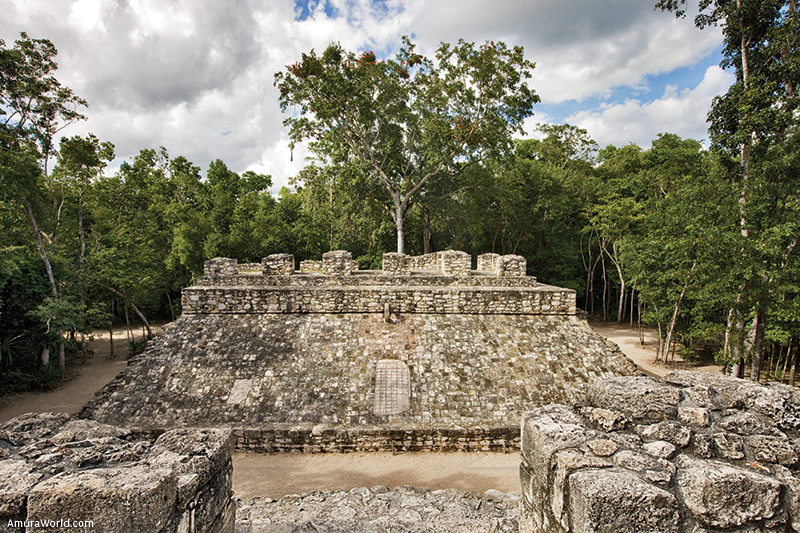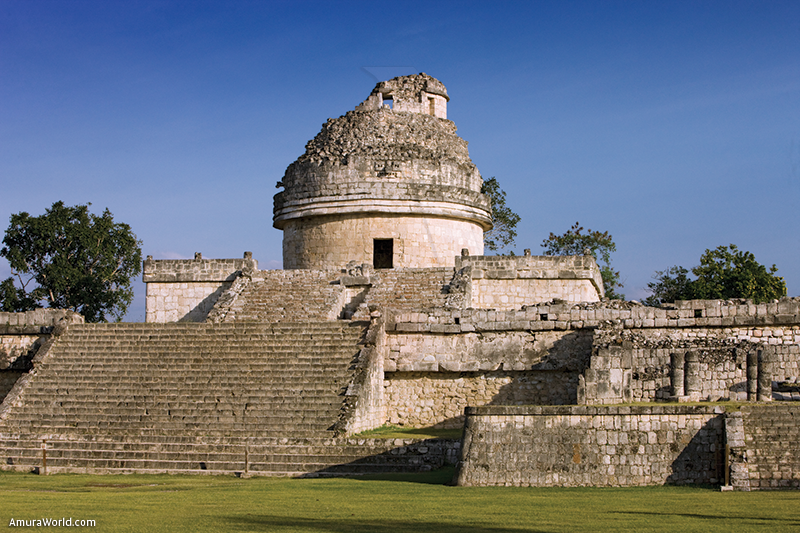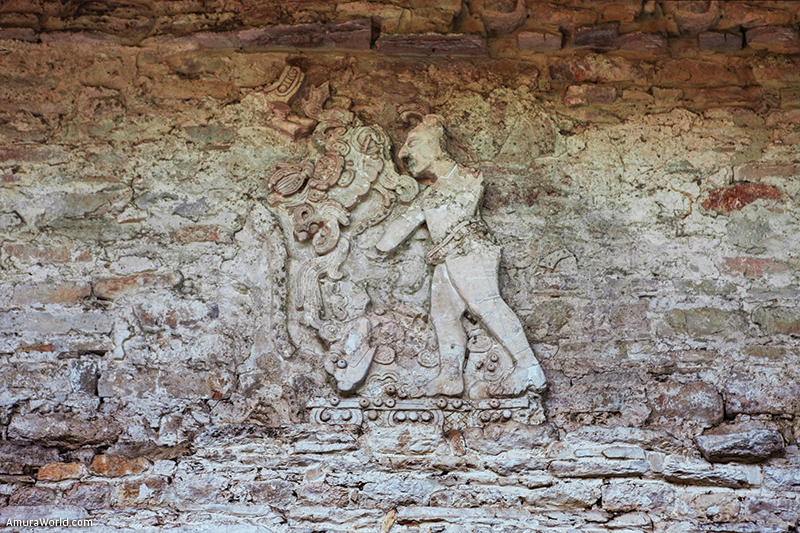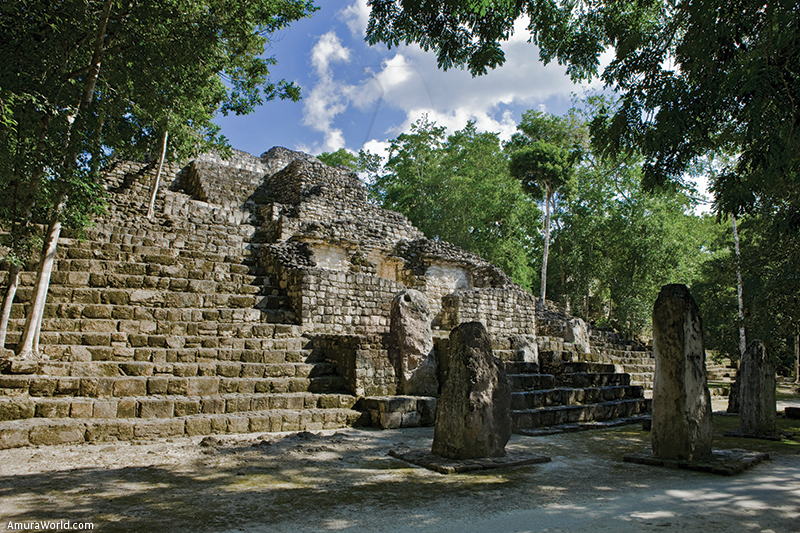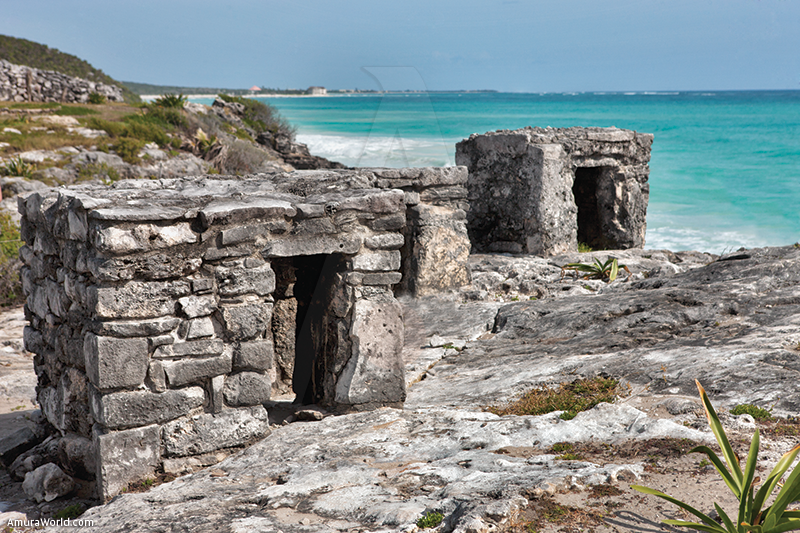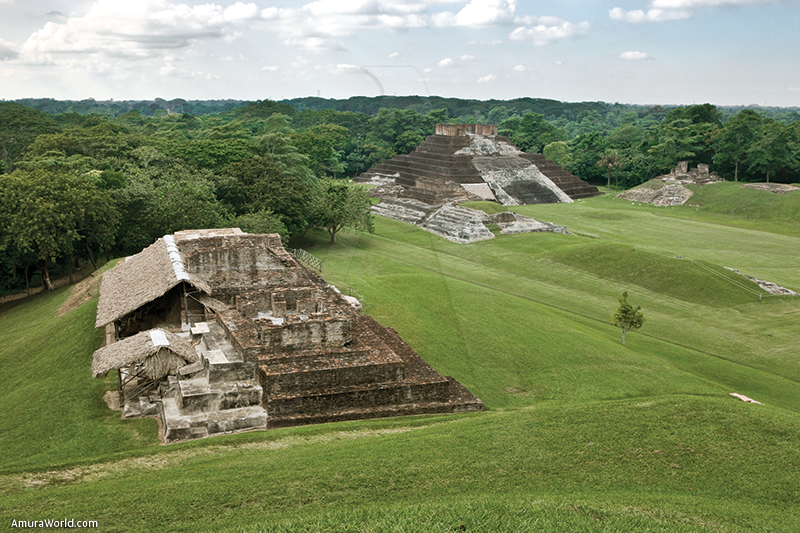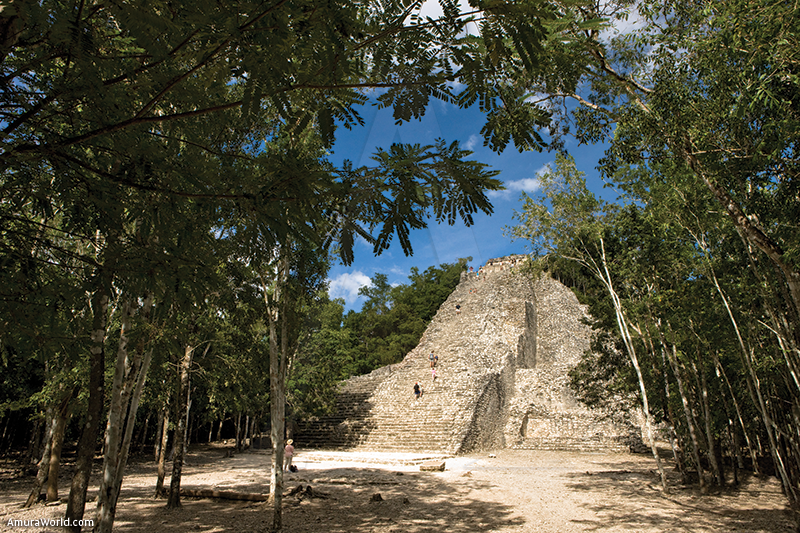Mayan World still alive beyond the stones. Enjoy its magnificence, its colours and its harmonious relationship with the rich nature of Mexico. Come and experience it!
Campeche
Balamku, a Pre-Hispanic Journey
Campeche is famous for being the home of the “universe frieze”, an archeological piece made of polychrome stucco, unique in the area, and with engravings of stylized jaguars, serpents and a saurian. Due to this monument, measuring over 53 feet in length, the Mayan meaning of this archeological site is the “Jaguar Temple”. This sacred city is divided into three architectural groups: South, Central and North, and only two of them have been partially explored since 1990, when this site was discovered.
Calakmul, awesome view of a Green Sea
The Calakmul archaeological site is quite spectacular. Discovered in 1931, the site is surrounded by dense jungle. Some 6,000 buildings have been located, but only a handful has been excavated to date. The site was named in 2002 as a UNESCO World Heritage Site. The area’s wildlife and tropical plant life diversity is astonishing. Calakmul is home to 86 species of mammals (jaguar, puma…); 282 species of birds, 50 species of reptiles, 400 types of butterflies and 73 types of wild orchids. The Reserve was created in 1989.
Edzna, city of the Itzas
Edzna means “The house of the wise water-men” mayan language. For a glimpse of one of the Yucatan’s most important archaeological sites, head east from Campeche City 60 km to Edzna. A great acropolis, its wealth of buildings and styles give a good idea of the enormous political, economic and religious power of the city. They built a complex network of canals used to transport goods and people and to defend them from outside attack.
Chiapas
Tonina, witness of Mayan splendor
This holy place located between jungle and forest contains one of the tallest buildings of Mesoamerica: The Great Pyramid with 70 meters in height. This ceremony center of the Mayan World located at 126 kilometers from Palenque features 97 buildings, two ball courts, 38 graves and 37 sculpture pieces, showcased in the interesting Museo de Sitio (Site Museum). This city which name means in tzeltal tongue “the house of stone” or “large houses of stone” was a military power as shown in its inscriptions about prisoners.
Painted Tales at Bonampak
In Ocosingo, Chiapas, Bonampak is an archeological place not fully explored, and preserve old murals that allow to discover way of life of millenary culture. These murals discovered in 1946 are considered one of the most impressive of pre-Hispanic Mexico’s many treasures. Bonampak means “painted walls” in the Mayan language. To date, this ancient city has only been explored in two buildings: the Great Plaza and the Acropolis, which together make up a rectangular space of 110 meters in length and 87 meters in width. The frescoes have been dated to the year 790 AD.
Quintana Roo
Tulum, postcard you´ll never forget
This place combines culture, history and one of the best beach in Mexico. Tulum holds the honor of being the most picturesque archaeological site in the Riviera Maya and the only one to have been built overlooking the ocean. Tulum was an ancient Mayan fortress city that rose to power toward the end of the Classic period (1000 AD approximately). At the southern end of the archaeological site is one of the most peaceful beaches of the Riviera.
Enjoy the View at Coba
Visitors who brave the steep climb up the highest pyramid in Mexico’s Mayan world reap the reward of a breathtaking vista. At more than 130 feet in height, Nohuch Mul, which means “large mound” in the Mayan language, is the tallest pyramid at Coba archaeological site and in the Yucatan Peninsula. In the Mayan language Coba means “water stirred by wind”. By car, the city is just an half hour from Tulum.
Tabasco
Comalcalco, Entrance into the Mayan World
Comalcalco (“House of Frying Pans” in Nahuatl) is one of the most important ancient cities in Tabasco, and the only Mayan city built with bricks of baked clay instead of stone. It’s impressive Site Museum houses around 300 pieces portraying the development of this ancient city. It is easily reached via Villahermosa (50 km). This Mayan ceremonial center is a fascinating place, but not visited too much. Comalcalco excelled as agricultural center specializing in the production of cocoa, a commercial product is still important in the region.
Yucatan
Mysteries of the Maya at Chichen Itza
Easily the best known and well-restored of Yucatan Mayan archaeological sites, Chichen Itza is a UNESCO World Heritage Site and was named one of the “New Seven Wonders of the World.” The ruins at Chichen Itza cover an area of 6.5 km square. Chichen Itza has two distinct architectural zones. Each year during the spring and autumn equinoxes the sun produces the illusion of a serpent ascending or descending the steps of the Pyramid of Kukulkan, a fantastic phenomenon that attracts huge crowds.
Uxmal’s Jungle Ruins
A majestic layout, spectacular jungle setting and pink-hued limestone pyramids and temples make Uxmal one of the most picturesque ancient cities in the Puuc region. The name Puuc translates to “hills” in Yucatec Maya. Uxmal was named World Heritage Site by UNESCO. It means “thrice-built” in Yucatec Maya, and refers to the construction of the “Pyramid of the Magician”, a one of a kind oval-shaped Uxmal pyramid and the tallest structure at the site. Climb to the top of the second-tallest Uxmal pyramid, the Great Pyramid, for good views overlooking the Uxmal ruins and Puuc region.
Text: CPTM ± Photo: Banco de imágenes CPTM / Fotógrafo Ricardo Espinosa (reo)



